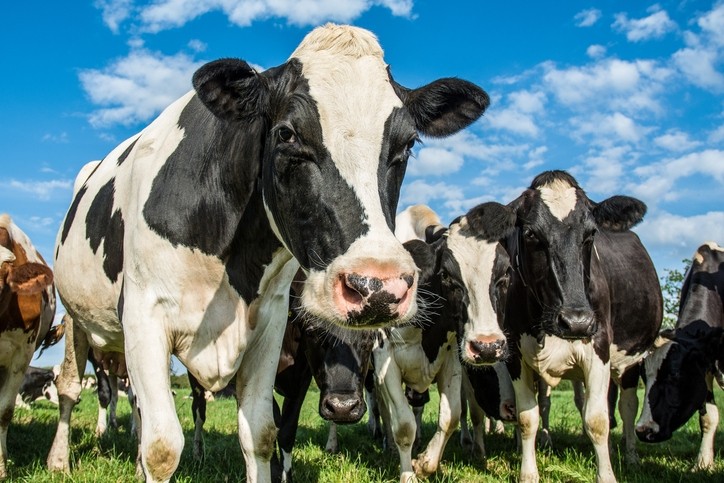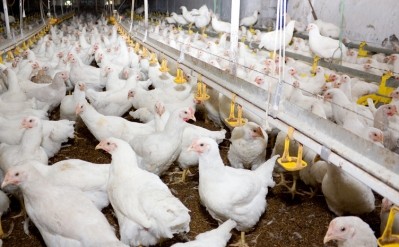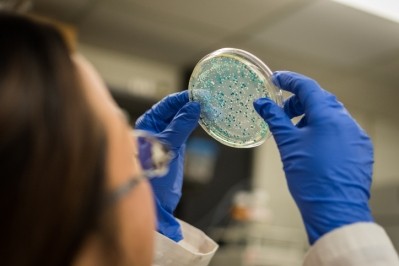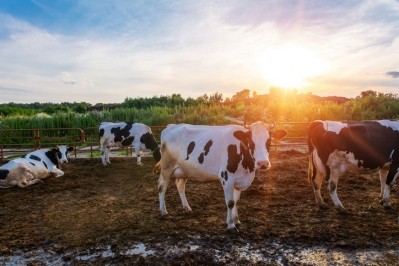Dispatches from the Cornell Nutrition Conference
Advancements in technology may lead to improved rumen function, fiber digestion

Although the rumen has the ability to digest fiber, there could be ways to make the process faster or more efficient, said Tim McAllister, principal research scientists in ruminant nutrition and microbiology with Agriculture and Agri-Food Canada.
He presented on some of the research being done to better understand how the rumen functions and processes being considered to improve its efficiency at last weeks’ post-conference symposium with the Cornell Nutrition Conference for Feed Manufacturers.
The goal of the talk was to give attendees a better understanding of the rumen ecosystem and how it works, he told FeedNavigator. “It’s already pretty efficient – and the challenge is to make it better,” he added.
“The cellulosic ethanol guys spent billions trying to have ethanol produced from cellulose and none of them really came close to matching the efficiency of the rumen system in terms of its ability to convert fiber into metabolic products that can be used either by animals or other purposes,” McAllister added in his talk. “It’s pretty difficult when you’re tasked with trying to improve a system that’s already pretty good.”
Current areas being explored include efforts to better understand the ruminal microbiome, along with new technologies to improve fiber degradation or processes to potentially seed a rumen with more efficient microbes, he told us.
The area continues to be of interest because diets for both dairy and beef cows can include large amounts of fiber, and improving digestion would mean that animals could gain more energy from that feed ingredient, he said. Additionally, it could improve animal health by reducing the need to use grain in diets, and continuing to support production.
“Many of the digestive upsets, many problems are related to feeding high levels of grain,” he added.
Ruminal exploration and seeding potential
Developments in microbiology and in the exploration of the microbiome concept have been improving work done on the rumen ecosystem, McAllister said.
The rumen may be one of the most complicated microbiomes known because it includes multiple types of microbes including bacteria, protozoa, methanogens and anaerobic fungi, he said. “You have an ecosystem within the rumen that is every bit as complicated as what you’d have in the Serengeti,” he added.
Scientific advances are providing researchers the ability to identify elements within the rumen that were previously unidentified, he said. However, to better understand the process of fiber digestion both the ruminal microbial population and the nature of the plant cell wall have to be considered in conjunction.
“We need to identify the factors that are limiting the rate of digestion of the plant cell wall,” he said. “If you break down the cellulose essentially what you end up with is glucose and that glucose has exactly the same energy value as the glucose in starch. If we can basically achieve the breakage of all the linkages we can turn fiber into grain if we want.”
Researchers now have the ability to identify the different genes or proteins being expressed during digestion and how enzymes are functioning during the process, McAllister said.
That knowledge can be used to establish a model regarding how different microbes are behaving.
A database of enzymes involved in the process is being established, which allows for an understanding of which are commonly found in the rumen and which may be less often present, he said. That information raises questions about the potential to introduce less common enzymes into the rumen to improve digestion, especially because wild ruminants tend to have a greater diversity of enzymes than domestic animals.
“This is really reflecting that the type of the feed these animals are consuming is driving the microbial population,” he added.
However, said McAllister, any microbes added to a rumen need to act in a synergistic manner to those already present and not hinder the efficacy of the established microbial population.
Probiotic supplementation has been one part of this effort, however, those products often have to be added daily to maintain a presence, he said. A study looking at introducing ruminal microbes from farm-raised bison into cows showed greater staying ability of the new microbial matter but did not greatly alter digestive ability.
Going forward, those efforts are likely to focus on work with calves, he said. “It’s difficult to alter the mature microbiome in the adult animal … if we did it earlier before it’s a competitive environment [the microbes] might become permanent residents,” he added.
Fiber degrading technologies
The improved understanding of the microbial communities in the rumen and cell wall structure may lead to the creation of specific enzyme blends, said McAllister.
The processes developed to understand which enzymes are present and how common they are also can inform the testing of enzyme combinations in terms of digestive performance, he said. Promising enzymes, or groups of enzymes, could then be modeled and further evaluated.
“The keys to enhancing ruminal fiber digestion we need to have the right microbes at the right time,” he said. “The unique thing about the strategy we’re taking now is we’re trying to select enzymes in light of their interaction with the rumen enzymes. Most of the past commercial enzymes that were out and evaluated and assessed in the feed industry were developed for some other purpose – they were not developed specifically for ruminants.”
Use of those enzymes could be unpredictable, he added.
“We’re trying to bring predictability into it by making rumen enzymes part of the equation,” said McAllister. “We need to understand the physical and chemical nature of the plant cell wall structure so we make sure we have the right enzymes.”
Additionally, another area of developing technology looks at potential chemical treatments that focus not to speed the rate of digestion but to improve how much of a forage or fibrous ingredient is digested, he said.
One promising version is the ammonia fiber expansion (AFEX) process being developed at Michigan Biotechnology Institute, he said.
“Basically the process is just a matter of grinding the forage, putting it in a chamber, adding in steam and heat, introducing ammonia vapor, running it through a soaking procedure, depressurizing it, and then stripping it back off and getting a final product that is then pelleted,” said McAllister. It uses low-quality fiber sources that are tough to digest, he added.
A study using AFEX pelleted wheat straw was conducted with sheep because the production is still limited, he said. However, in the feeding trial, 30% of alfalfa pellets were replaced with the pelleted wheat straw.
The feed ingredient had improved digestibility for neutral detergent fiber and ADF, he said.
The gain to feed ratio was slightly lower for sheep on the trial diet, he said, adding, “but when you consider adding 30% of wheat straw to lamb diets is usually not a good idea, we still have a real marginal difference in gain to feed.”
“This treatment can dramatically improve the value of wheat straw as a fiber source from an energy perspective,” said McAllister. The AFEX treated pelleted material also can be further improved by adding an enzyme, he added.
However, there are still some limitations to the work including expense and scale of the current operation, he said.















